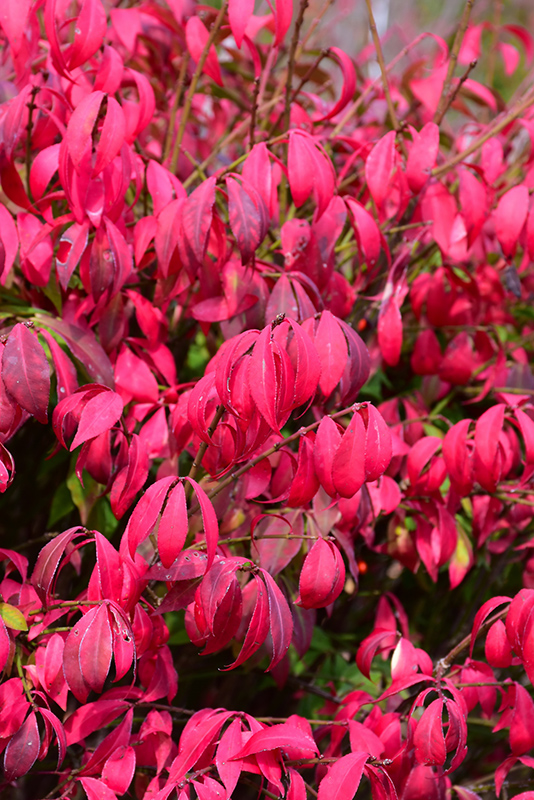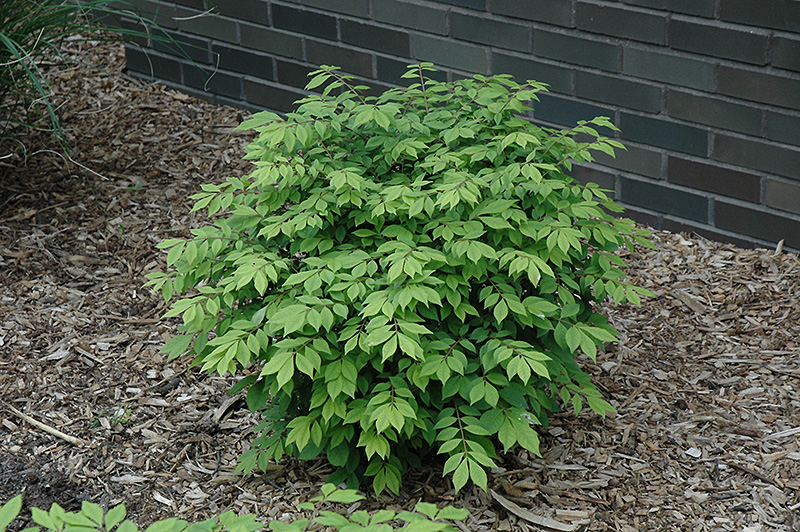PLANT FINDER
Little Moses Burning Bush
Euonymus alatus 'Odom'
Height: 3 feet
Spread: 3 feet
Sunlight:
![]()
![]()
![]()
Hardiness Zone: 4a
Other Names: Winged Euonymus, Burningbush
Description:
One of the smallest varieties of burning bush with stunning fall color of florescent red to pink, very showy; interesting corky wings on the branches; very adaptable and versatile; ideal for all those tight spots in the garden
Ornamental Features
Little Moses Burning Bush is primarily valued in the garden for its interestingly mounded form. It has bluish-green deciduous foliage. The pointy leaves turn an outstanding crimson in the fall. It produces red capsules from early to late fall. The harvest gold stems are very effective and add winter interest.
Landscape Attributes
Little Moses Burning Bush is a dense multi-stemmed deciduous shrub with a mounded form. Its average texture blends into the landscape, but can be balanced by one or two finer or coarser trees or shrubs for an effective composition.
This is a relatively low maintenance shrub, and can be pruned at anytime. It has no significant negative characteristics.
Little Moses Burning Bush is recommended for the following landscape applications;
- Accent
- Mass Planting
- Hedges/Screening
- General Garden Use
Planting & Growing
Little Moses Burning Bush will grow to be about 3 feet tall at maturity, with a spread of 3 feet. It tends to fill out right to the ground and therefore doesn't necessarily require facer plants in front. It grows at a slow rate, and under ideal conditions can be expected to live for 40 years or more.
This shrub performs well in both full sun and full shade. It is very adaptable to both dry and moist locations, and should do just fine under typical garden conditions. It is not particular as to soil type or pH. It is highly tolerant of urban pollution and will even thrive in inner city environments. This is a selected variety of a species not originally from North America.
A NetPS Plant Finder tool



